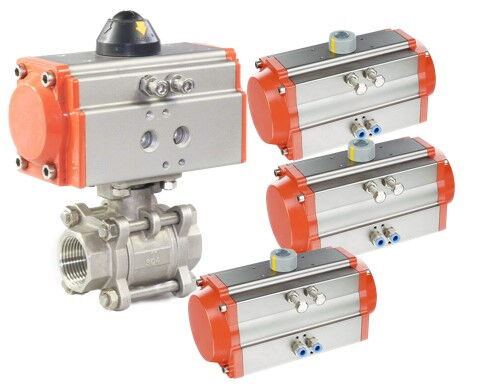How to Maintain Their Pneumatic Control Valve Actuators
In modern industrial automation systems, pneumatic control valves play a key role in regulating the flow, pressure, and temperature of fluids. Their ability to control these factors precisely is essential for maintaining smooth, safe, and efficient production processes. Pneumatic actuators, which are responsible for powering these control valves, are what make the valve actually move to open, close, or adjust. So, taking care of these actuators is crucial for keeping everything running smoothly.
Pneumatic actuators are made up of several important parts like the cylinder, piston, piston rod, seals, and cushioning devices. They work by turning the pressure of compressed air into mechanical movement. When compressed air is introduced into the actuator, it pushes the piston, which then moves within the cylinder. This motion is transferred through the piston rod, causing the valve stem to move and adjust the valve accordingly.
For pneumatic actuators to work well and last, they need to meet certain design requirements.
Sealing: The seals are critical because they keep the air inside the actuator and stop it from leaking out. Without proper sealing, the actuator's performance can suffer. You need high-quality seals that will hold up over time.
Durability: The parts that move, like the cylinder and piston, need to be tough. They should be resistant to wear and impact since they move frequently and need to withstand rough conditions.
Environmentally Resistant: Pneumatic actuators need to work well in various environments, whether it's extremely hot or cold, humid, or dusty. They also need to withstand conditions like overpressure or sudden pressure drops.
Even though pneumatic actuators are built to last, they can still run into problems that affect their performance. If the valve is moving too slowly, or not moving at all, it's usually a sign that something's gone wrong. Here are some common reasons for damage.
The seals in pneumatic actuators are very important. They help keep the air pressure inside the actuator and prevent it from leaking. If the seals wear out, the actuator won't work right. Here are some reasons seals fail:
Wear and Tear: Over time, seals naturally wear down because of the pressure and friction they deal with. As they age, they can become brittle or cracked, leading to leaks.
Leaks: If the actuator starts leaking air either inside or outside, it affects how the valve operates. Internal leaks make the actuator slower, and external leaks waste energy and can cause environmental issues.
The environment the actuator works in can cause issues too. Things like temperature, air quality, and pressure fluctuations can all affect the actuator's performance.
Poor Air Quality: If the compressed air has moisture, oil, or dirt in it, it can damage the seals and other parts, leading to wear and even corrosion.
Pressure Problems: If the air pressure going into the actuator is too high or too low, it can break the seals, bend parts, or cause other issues that lead to failure.
Temperature Extremes: Extreme temperatures can also hurt the actuator. High temperatures can make seals brittle, while low temperatures can cause friction and slow movement.
Dirty or Harsh Environments: In environments with dust or chemicals, the actuator's parts may get dirty or corroded, leading to faster wear and damage.
Taking care of pneumatic actuators is key to making sure they last as long as possible and continue to work well. Here are some things you can do to keep them in top shape.
Proper installation is the first step to making sure your actuator works well. Follow the manufacturer's instructions closely and make sure all parts are properly connected. After installation, run some tests to check that everything is working correctly. Make sure there are no leaks and that the actuator is moving smoothly.
Regular inspections are a must. Check the actuator for any signs of wear, such as cracks, leaks, or damaged seals. Also, keep an eye on the lubrication level to make sure everything stays smooth and friction-free. If you find any issues, take care of them before they get worse. It's also a good idea to clean the actuator and reapply lubricant every now and then.
The air used in pneumatic actuators should be clean and dry. It's important to use filters and dehumidifiers to remove moisture, oil, and dirt from the air. Poor air quality is one of the main causes of actuator failure, so it's worth investing in a good filtration system.
Don't push the actuator too hard. Avoid overloading it with excessive pressure or forcing it to work outside its designed limits. Also, try not to keep the actuator in one extreme position for too long. Giving it regular breaks can help avoid unnecessary wear and tear.
If seals or other parts are worn out, replace them as soon as possible. Over time, parts like seals can age and lose their effectiveness. Replacing them early can prevent bigger problems and keep the actuator running smoothly.
Pneumatic actuators are essential for controlling pneumatic valves and keeping industrial systems running smoothly. By maintaining these actuators properly, you ensure the entire system stays efficient and effective. Following the right installation steps, doing regular checks, keeping the air clean, and replacing worn parts all play a role in extending the life of pneumatic actuators. With a little care and attention, your actuators can keep your control valves moving reliably for years.

